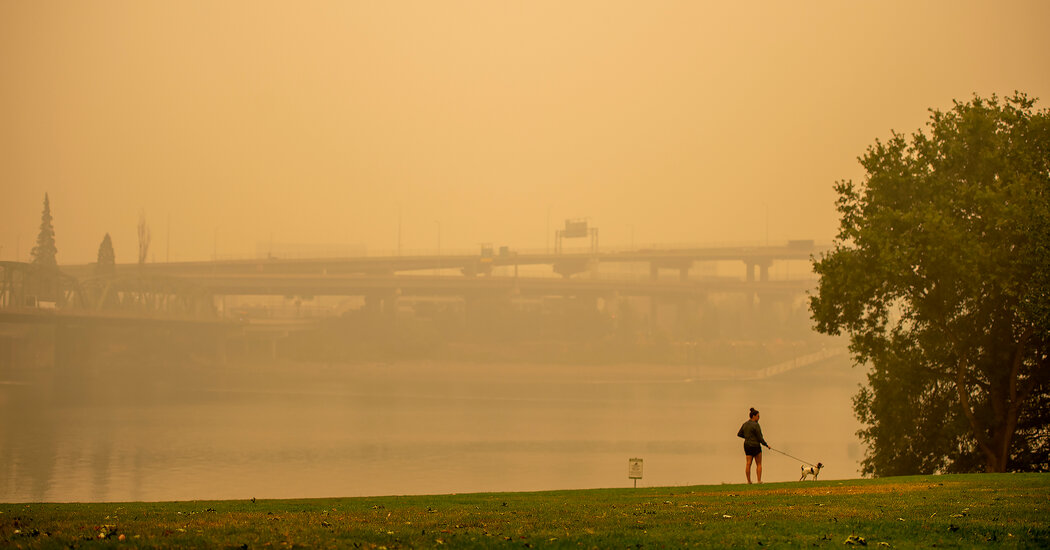Scientists are still studying the long-term health effects of smoke exposure.
Extreme wildfires are becoming more common, more intense and more of a pressing problem for public health. This week, more than 20,000 people in Northern California evacuated their homes as flames destroyed houses and cars.
Wildfire smoke presents its own challenge. There is most likely no safe level of exposure to wildfire smoke, said Jennifer Stowell, a climate and health research scientist at the Boston University School of Public Health. But there are precautions you can take to minimize its toll on your health.
What to look for
Don’t rely on only your eyes to determine when the air quality is poor, said Dr. Panagis Galiatsatos, a pulmonary and critical care medicine physician at Johns Hopkins Medicine. Get in the habit of checking air quality indexes every day, especially in the summer, when wildfires are more common. You can look at AirNow.Gov for a measure of your local air quality; Fire.airnow.gov also has a helpful map of fire and smoke patterns and how they are influencing air quality.
It’s also important to know your personal risk. Wildfire smoke can exacerbate respiratory conditions: People with asthma may be prone to more attacks, and those with chronic obstructive pulmonary disease can experience more difficulty breathing.
It can sometimes take a week or so for those symptoms to appear after you breathe in wildfire smoke, Dr. Stowell said.
Inhaling smoke can also trigger inflammation in the body, which may put people with underlying chronic conditions like diabetes, chronic kidney disease and heart disease at increased risk of getting sick.
